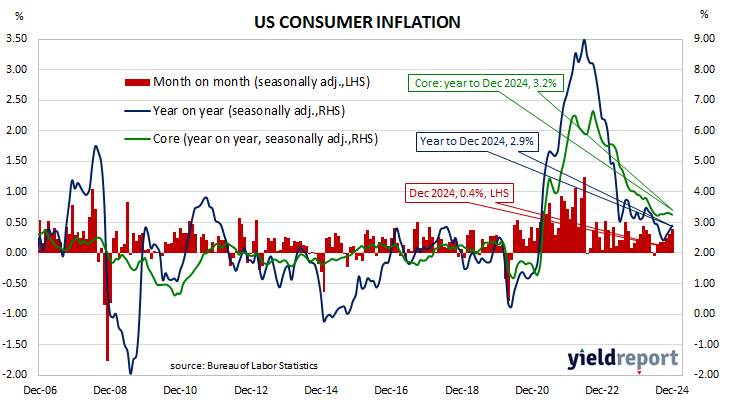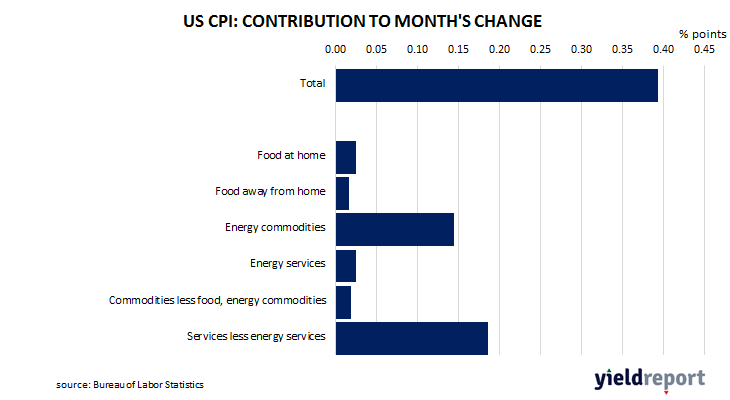Summary: US CPI up 0.4% in December, in line with expectations; annual inflation rate up from 2.7% to 2.9%; “core” rate up 0.2%, up 3.2% over year; Westpac: about half of increase attributable to energy component; US Treasury yields fall; rate-cut expectations firm; Westpac: solid improvement in pace of core services inflation; non-energy services again main driver of overall result.
The annual rate of US inflation as measured by changes in the consumer price index (CPI) halved from nearly 3% in the period from July 2018 to February 2019. It then fluctuated in a range from 1.5% to 2.0% through 2019 before rising above 2.0% in the final months of that year. Substantially lower rates were reported from March 2020 to May 2020 and they remained below 2% until March 2021. They then rose significantly before declining from mid-2022.
The latest US CPI figures released by the Bureau of Labor Statistics indicated seasonally-adjusted consumer prices increased by 0.4% on average in December. The rise was in line with expectations but up from November’s 0.3% increase. On a 12-month basis, the inflation rate accelerated from 2.7% to 2.9%.
“Headline” inflation is known to be volatile and so references are often made to “core” inflation for analytical purposes. The core prices index, the index which excludes the more variable food and energy components, increased by 0.2% on a seasonally-adjusted basis over the month, below expectations of a 0.3% rise as well the rises in the previous four months. The annual growth rate slowed from 3.3% to 3.2%.
“The consumer price index accelerated in December, rising 0.4% in the month, up from 0.3% in November,” said Westpac economist Jameson Coombs. “However, close to a half of the increase was accounted for by the energy component, which was driven by a 4.4% monthly increase in gasoline prices.”
US Treasury bond yields fell noticeably across the curve on the day. By the close of business, the 2-year Treasury yield had lost 9bps to 4.27%, the 10-year yield had shed 13bps to 4.65% while the 30-year yield finished 10bps lower at 4.87%.
In terms of US Fed policy, expectations of a lower federal funds rate in the next 12 months firmed, with another 25bp cut currently priced in. At the close of business, contracts implied the effective federal funds rate would average 4.325% in February, 4.295% in March and 4.255% in April. December contracts implied 3.93%, 40bps less than the current rate.
“Most of the monthly slowdown in core inflation was driven by core goods prices, while core services inflation was little changed on November’s pace, though this was still a solid improvement in the pace of core services inflation compared to the remainder of H2 2024,” Coombes added. “Crucially, the super-core inflation measure edged down to 0.2% from 0.3% in November.”
The largest influence on headline results is often the change in fuel prices. Prices of “Energy commodities”, the segment which includes vehicle fuels, increased by 4.3% and contributed 0.14 percentage points to the total. However, prices of non-energy services, the segment which includes actual and implied rents, again had the largest single effect on the total as they contributed 0.19 percentage points following a 0.3% increase on average.



